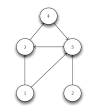Application of ecological network theory to the human microbiome - PubMed (original) (raw)
Application of ecological network theory to the human microbiome
James A Foster et al. Interdiscip Perspect Infect Dis. 2008.
Abstract
In healthy humans, many microbial consortia constitute rich ecosystems with dozens to hundreds of species, finely tuned to functions relevant to human health. Medical interventions, lifestyle changes, and the normal rhythms of life sometimes upset the balance in microbial ecosystems, facilitating pathogen invasions or causing other clinically relevant problems. Some diseases, such as bacterial vaginosis, have exactly this sort of community etiology. Mathematical network theory is ideal for studying the ecological networks of interacting species that comprise the human microbiome. Theoretical networks require little consortia specific data to provide insight into both normal and disturbed microbial community functions, but it is easy to incorporate additional empirical data as it becomes available. We argue that understanding some diseases, such as bacterial vaginosis, requires a shift of focus from individual bacteria to (mathematical) networks of interacting populations, and that known emergent properties of these networks will provide insights that would be otherwise elusive.
Figures
Figure 1
A hypothetical trophic web with five species. Species 1 and 2 are “grazers” at the bottom level, which acquire nutrients directly from the environment and provide nutrients to species 3 and 5. Species 3, 4, and 5 form a dependent cycle, with 3 and 5 at the second level of the web and 4 at the final level.
Figure 2
Mathematical network with undirected edges, representing the structure of the trophic web in Figure 1, pictorially and as an equivalent adjacency matrix. The connectivity of the nodes is one for node 2, two for nodes 1 and 4, three for node 3, and four for node 5 (which is a hub node).
Figure 3
Directed graph representing (hypothetical) strengths of species interactions and the corresponding matrix of interaction strengths. Positive (negative) values indicate increase (decrease) in receiving species' fitness. Units of interaction are unspecified in this example, but may be observed changes in biomass. For example, species 1 may produce a metabolite beneficial to species 3(a 31 = 1.2), while 3 occasionally harms 1(a 13 = −0.3) while consuming the metabolite. Species 3 and 4 are competitors, 5 and 4 are mutualists, and other pairs resemble predator/prey.
Similar articles
- In silico trio-biomarkers for bacterial vaginosis revealed by species dominance network analysis.
Ma ZS, Ellison AM. Ma ZS, et al. Comput Struct Biotechnol J. 2021 May 11;19:2979-2989. doi: 10.1016/j.csbj.2021.05.020. eCollection 2021. Comput Struct Biotechnol J. 2021. PMID: 34136097 Free PMC article. - Interspecies Social Spreading: Interaction between Two Sessile Soil Bacteria Leads to Emergence of Surface Motility.
McCully LM, Bitzer AS, Seaton SC, Smith LM, Silby MW. McCully LM, et al. mSphere. 2019 Jan 30;4(1):e00696-18. doi: 10.1128/mSphere.00696-18. mSphere. 2019. PMID: 30700513 Free PMC article. - Machine Learning Reveals Missing Edges and Putative Interaction Mechanisms in Microbial Ecosystem Networks.
DiMucci D, Kon M, Segrè D. DiMucci D, et al. mSystems. 2018 Oct 30;3(5):e00181-18. doi: 10.1128/mSystems.00181-18. eCollection 2018 Sep-Oct. mSystems. 2018. PMID: 30417106 Free PMC article. - Using Network Theory to Understand and Predict Biological Invasions.
Frost CM, Allen WJ, Courchamp F, Jeschke JM, Saul WC, Wardle DA. Frost CM, et al. Trends Ecol Evol. 2019 Sep;34(9):831-843. doi: 10.1016/j.tree.2019.04.012. Epub 2019 May 30. Trends Ecol Evol. 2019. PMID: 31155422 Review. - Vaginal microbiome.
Buchta V. Buchta V. Ceska Gynekol. 2018 Winter;83(5):371-379. Ceska Gynekol. 2018. PMID: 30848142 Review. English.
Cited by
- Extrinsic Factors Shaping the Skin Microbiome.
Moskovicz V, Gross A, Mizrahi B. Moskovicz V, et al. Microorganisms. 2020 Jul 10;8(7):1023. doi: 10.3390/microorganisms8071023. Microorganisms. 2020. PMID: 32664353 Free PMC article. Review. - Characterization of the vaginal micro- and mycobiome in asymptomatic reproductive-age Estonian women.
Drell T, Lillsaar T, Tummeleht L, Simm J, Aaspõllu A, Väin E, Saarma I, Salumets A, Donders GG, Metsis M. Drell T, et al. PLoS One. 2013;8(1):e54379. doi: 10.1371/journal.pone.0054379. Epub 2013 Jan 23. PLoS One. 2013. PMID: 23372716 Free PMC article. - The poultry-associated microbiome: network analysis and farm-to-fork characterizations.
Oakley BB, Morales CA, Line J, Berrang ME, Meinersmann RJ, Tillman GE, Wise MG, Siragusa GR, Hiett KL, Seal BS. Oakley BB, et al. PLoS One. 2013;8(2):e57190. doi: 10.1371/journal.pone.0057190. Epub 2013 Feb 27. PLoS One. 2013. PMID: 23468931 Free PMC article. - Sex effects on neurodevelopmental outcomes of innate immune activation during prenatal and neonatal life.
Rana SA, Aavani T, Pittman QJ. Rana SA, et al. Horm Behav. 2012 Aug;62(3):228-36. doi: 10.1016/j.yhbeh.2012.03.015. Epub 2012 Apr 6. Horm Behav. 2012. PMID: 22516179 Free PMC article. Review. - A challenge to vaccinology: living organisms trap information.
Danchin A. Danchin A. Vaccine. 2009 Dec 30;27 Suppl 6:G13-6. doi: 10.1016/j.vaccine.2009.10.071. Vaccine. 2009. PMID: 20006133 Free PMC article.
References
- Ley RE, Peterson DA, Gordon JI. Ecological and evolutionary forces shaping microbial diversity in the human intestine. Cell. 2006;124(4):837–848. - PubMed
- Ley RE, Turnbaugh PJ, Klein S, Gordon JI. Microbial ecology: human gut microbes associated with obesity. Nature. 2006;444(7122):1022–1023. - PubMed
- Mazmanian SK, Liu CH, Tzianabos AO, Kasper DL. An immunomodulatory molecule of symbiotic bacteria directs maturation of the host immune system. Cell. 2005;122(1):107–118. - PubMed
LinkOut - more resources
Full Text Sources


